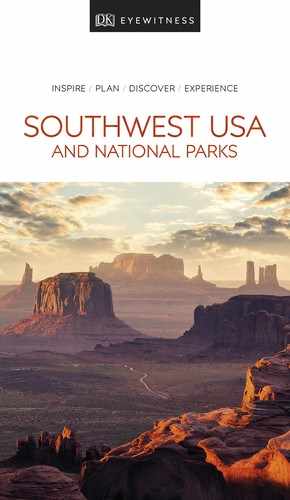The high, forested mesa overlooking the Montezuma Valley was home to the Ancestral Puebloan people for more than 700 years. Within the canyons that cut through the mesa are some of the best-preserved and most elaborate cliff dwellings built by Native Americans.

t Cliff Palace, the largest Ancestral Puebloan cliff dwelling found anywhere
Experience The Four Corners
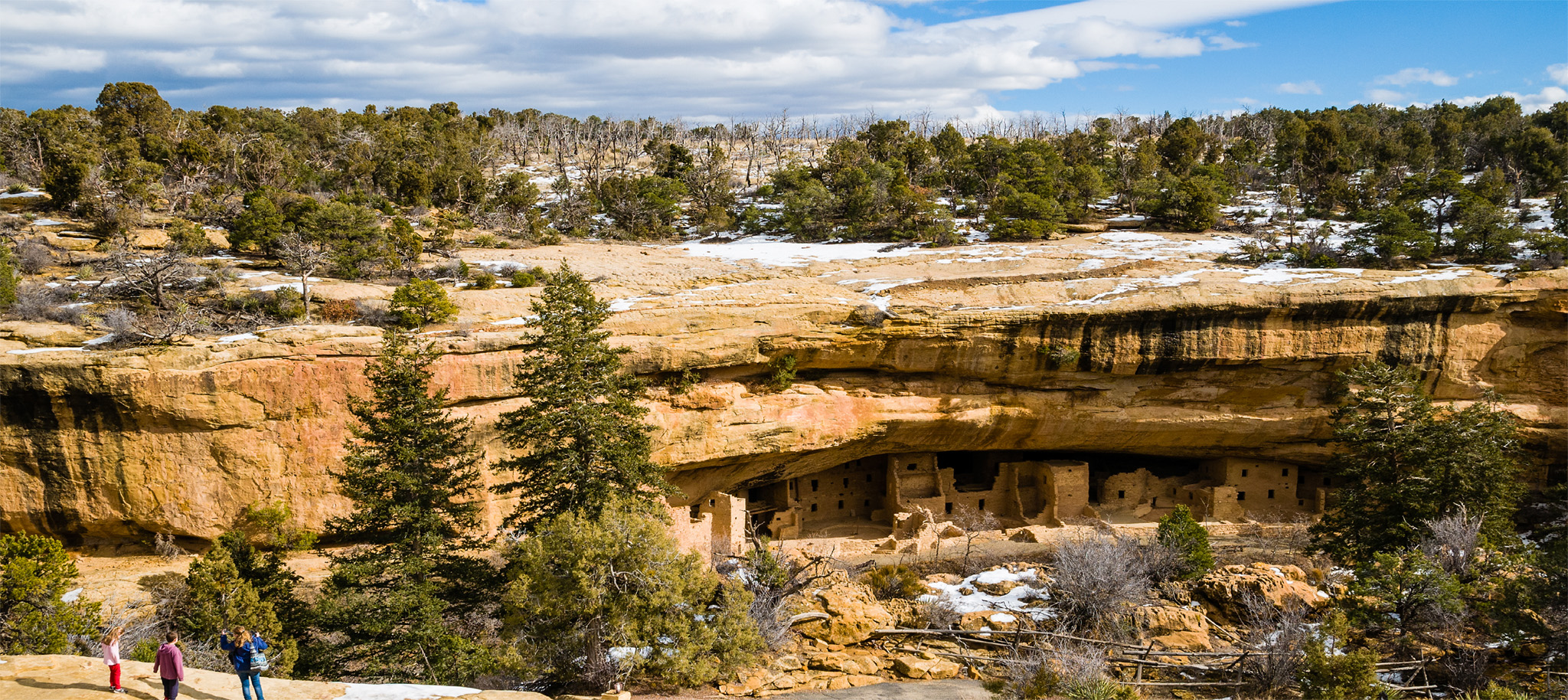
t The ruins of Spruce Tree House, nestled in the cliffs of Chapin Mesa
Mesa Verde, meaning “Green Table,” was a name given to the area by the Spanish in the 1700s. The ruins were discovered by local ranchers in the late 19th century, and the national park was created in 1906 to protect this amazing human legacy.
Nearly 5,000 archaeological sites have been found in the park, including 600 cliff dwellings. They provide a fascinating record of the people who lived here, from the 1st century AD Basketmaker period to the complex Ancestral Puebloan society that built the many-roomed cliff dwellings between 1100 and 1250. Living in large family groups, they hunted, foraged, and farmed on the fertile mesa.
Pueblo buildings beneath the overhanging cliffs ranged from single storage rooms to villages of more than 150 rooms, with round ceremonial kivas and lookout towers. Built of hard sandstone blocks, held together with adobe mortar, these dwellings filled every available space in the alcoves. With 150 rooms and 23 kivas, Cliff Palace is the largest cliff dwelling and is the site that most visitors focus on. The location and symmetry suggest that architecture was important to the builders. Other key sites that can be visited include Square Tower House, Long House, Step House, and Balcony House, where access is by climbing three ladders, high above the canyon floor, then crawling through a tunnel.
By around 1300, these impressive cliff homes had been abandoned and the people had moved south to New Mexico and Arizona, where they merged with the ancestors of today’s Pueblo communities. They may have left because of drought, crop failures, warfare, or better opportunities; their disappearance is one of the great mysteries of Mesa Verde.

Insider Tip
Twilight Tour
An intimate experience, the Cliff Palace Twilight Tour is limited to just 15 people. When the crowds have gone, you can sense the ancient atmosphere of these dwellings, while the light and shadow from the setting sun creates dramatic photographs.
Exploring Mesa Verde National Park
Start at the Visitor and Research Center, and then continue to Chapin Mesa, which holds the highest concentration of sites open to the public. It is reached along the Mesa Top Loop Road, a 6-mile (10-km) scenic route with cliff dwelling overlooks and short, paved trails. Branch off along the Cliff Palace Loop Road for more great views overlooking key sites. Wetherill Mesa, on the western side of the park, is less visited and contains Long House, Kodak House, Step House, and the Badger House Community. There’s a more relaxed experience here, with most sites reached along walking trails.
To protect the park’s archaeological treasures, outdoor activities are largely restricted to hiking on designated trails. The park offers special backcountry tours and hike-and-bike adventure treks in season. In winter, park trails are open for crosscountry skiing and snowshoeing, a magical experience.
Museum Artefacts
Some three million objects, from pottery to baskets to stone tools, have been found at Mesa Verde. Displays at the Visitor and Research Center and the Chapin Mesa Museum provide fascinating insights into this ancient world.
Petroglyph Point Trail
This 2.4-mile (4-km) loop trail passes a large petroglyph panel. The trail is narrow and rocky, with several steep drop-offs along the canyon wall on the way to the petroglyph panel. The trail-head is located near the Chapin Mesa Archeological Museum.
Did You Know?
The three-story structures of Spruce Tree House probably housed around 100 people.

Great View
Overlooks
From Park Point, the highest elevation on the mesa, you’ll have panoramic views. Other great viewpoints include Kodak House Overlook and the Soda Canyon Overlook, which has a splendid view of Balcony House.
Experience The Four Corners
Guided Tours
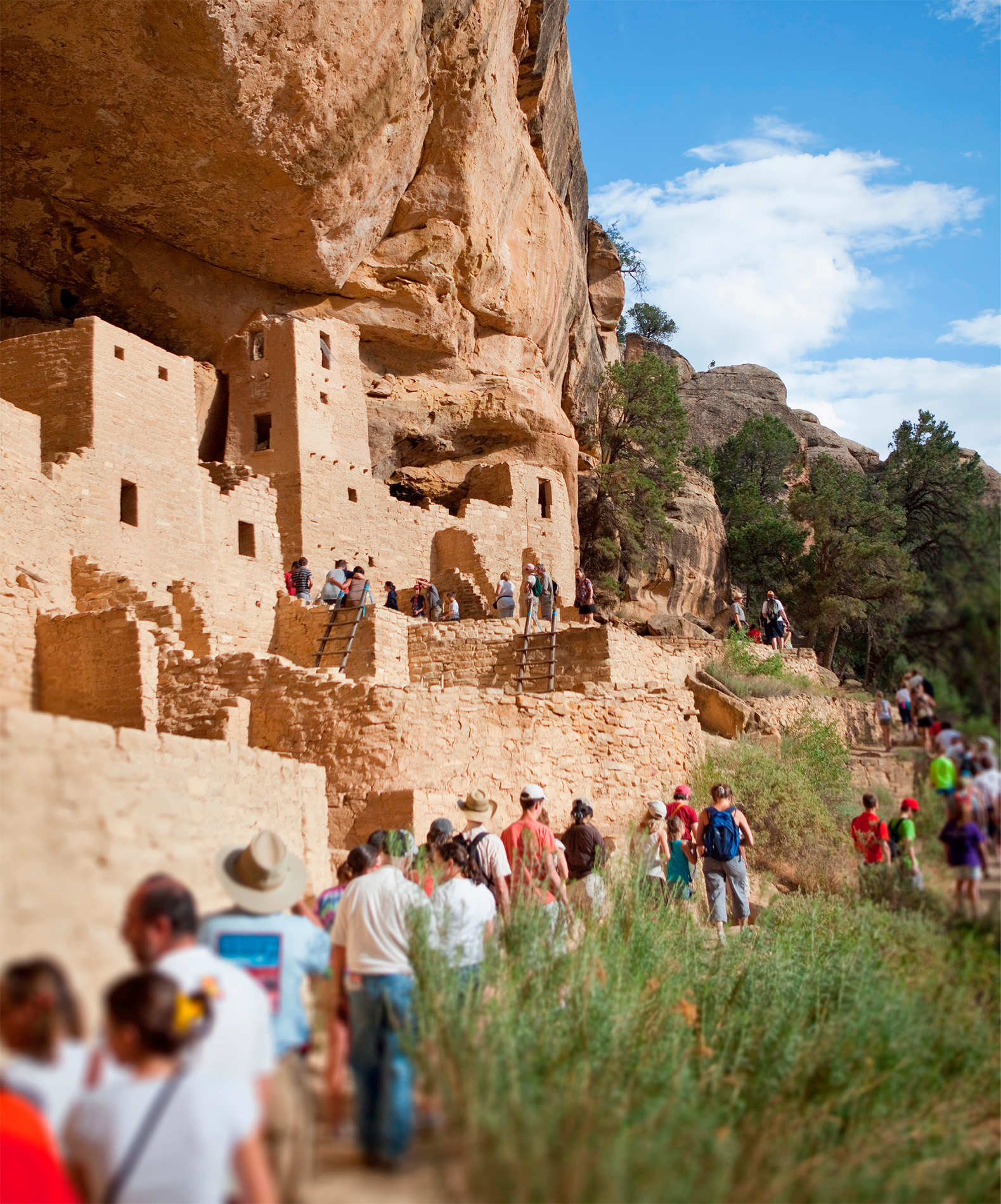
Many sites can be seen on self-guided tours. To visit Cliff Palace, Balcony House, and Long House, you must take a ranger-guided tour. The tours are strenuous, and involve climbing ladders, hiking, and crawling through a tunnel. You can buy tickets up to two days in advance.
EXPERIENCE The Four Corners
Timeline |
c 550 ADFirst pit houses appear during the Basketmaker period. |
c 700First small villages are built at Mesa Verde. |
1100–1300Extensive pueblo complexes are built by Ancestral Puebloans, including 600 cliff dwellings. |
1300Ancestral Puebloan peoples migrate from Mesa Verde; nobody knows for sure why. |
1888Cowboys looking for stray cattle discover Cliff Palace dwelling, sparking the start of exploration of other ruins in Mesa Verde. |
1906Mesa Verde is designated a national park. |
1908Archaeological excavation and preservation starts, continuing to this day. |
1910sTourists start visiting in increasing numbers. |
1976Lands are added to the National Park with new wilderness designations. |
1978Mesa Verde is designated a World Heritage Site, one of the first World Heritage sites in the US. |
The Ancestral Puebloans
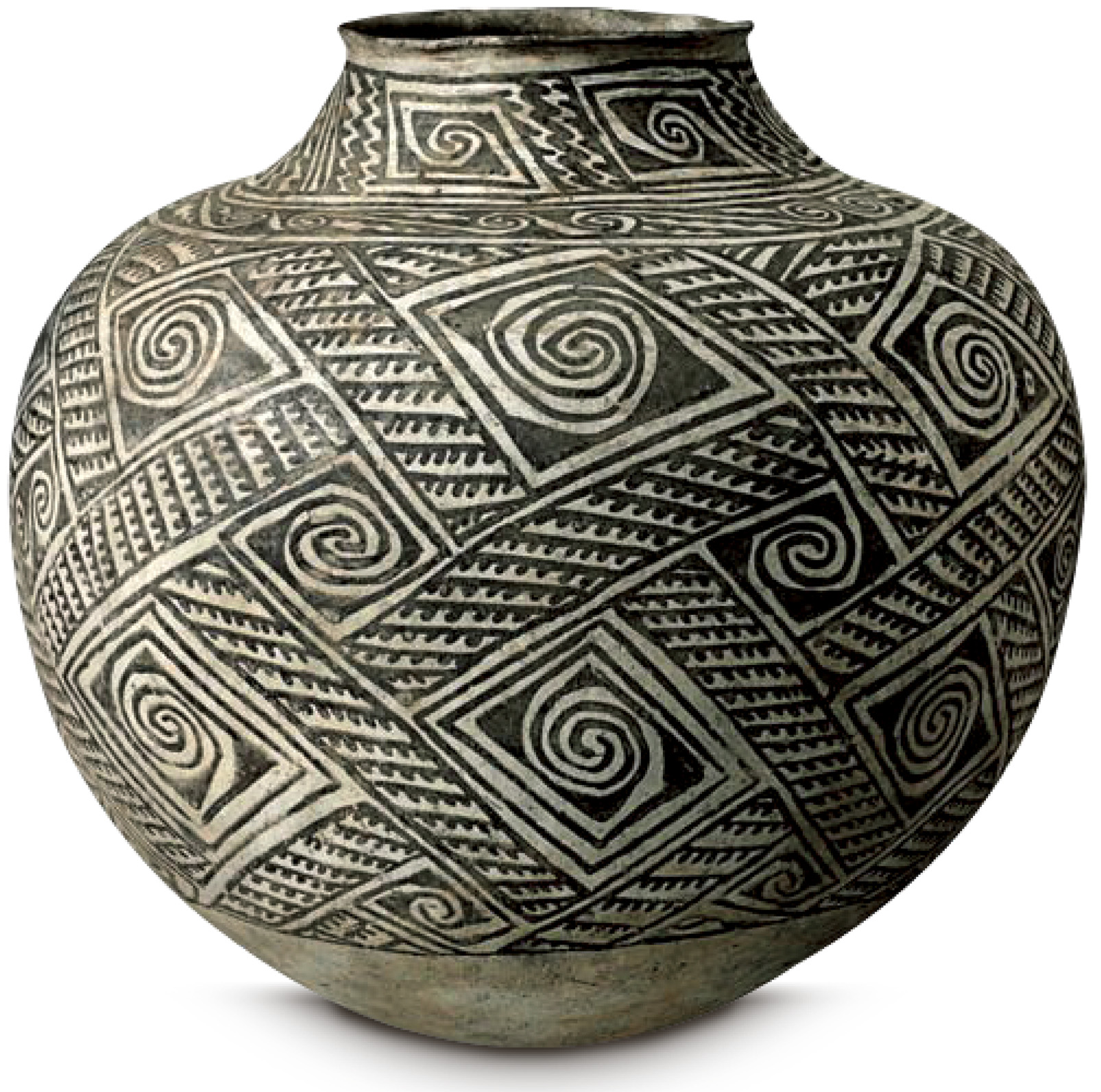
t Intricately decorated Ancestral Puebloan ceramic jar (c 1100–1125)
The hauntingly beautiful and elaborate ruins left behind by the ancient Ancestral Puebloan people have captured the public imagination. Also known as Anasazi, a name coined by the Navajo meaning “Ancient Enemy Ancestor,” they are seen as the ancestors of today’s Pueblo peoples. The first Ancestral Puebloans are thought to have settled at Mesa Verde in around AD 500, where they lived in pithouses. By AD 800 they had developed masonry skills and began building housing complexes using sandstone. From 1100 to 1300 AD, impressive levels of crafts-manship were reached in weaving, pottery, jewelry, and tool-making.
The Pueblo People
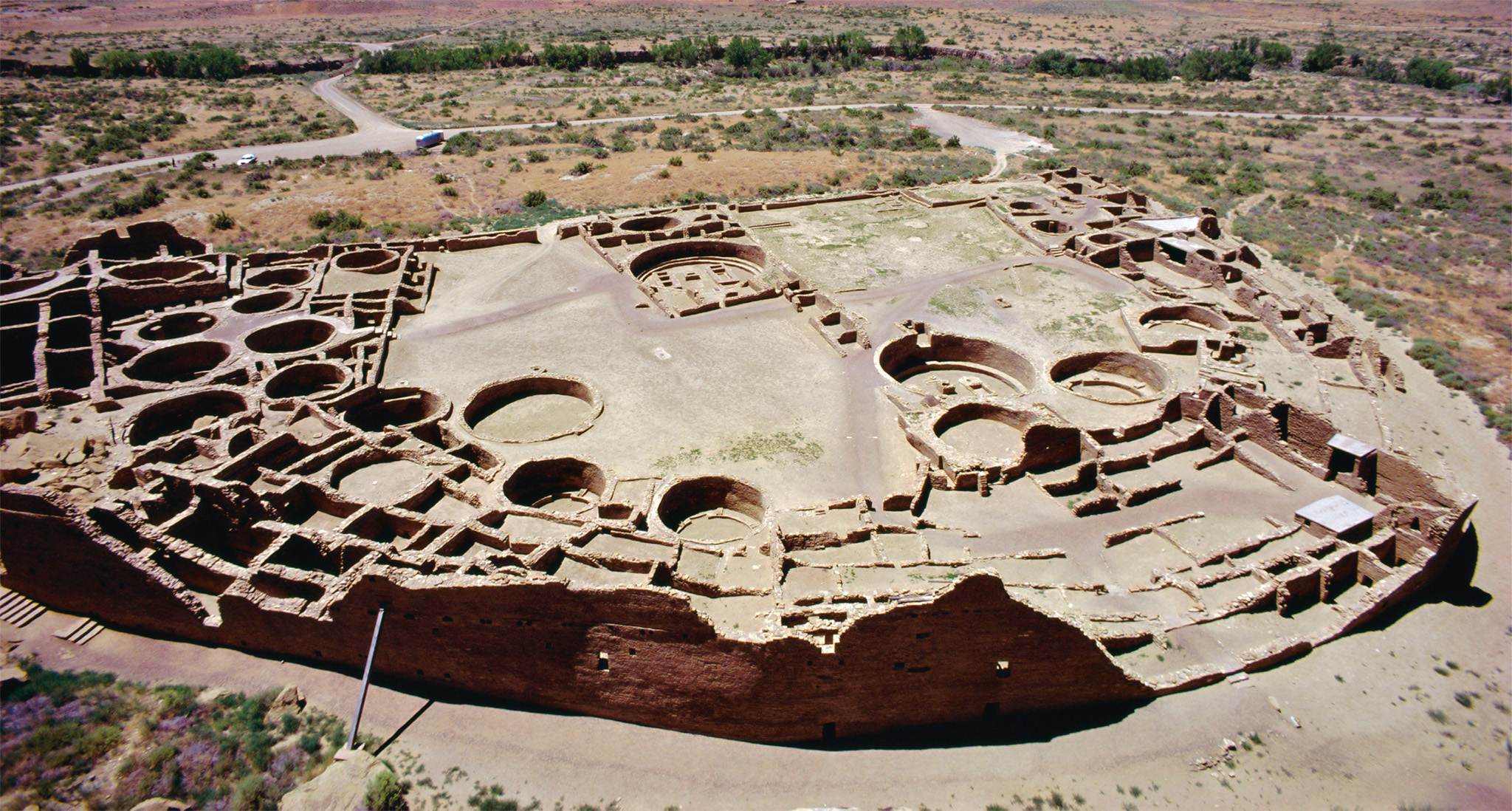
t The huge Pueblo Bonito at Chaco Canyon, which had more than 400 rooms and 40 kivas
By 1300 AD the Ancestral Puebloans had abandoned many of their long-established settlements and migrated to areas where new centers emerged. Theories on why this occurred include a 50-year drought; the strain that a larger population placed on the desert’s limited resources; and a lengthy period of social upheaval, perhaps stimulated by increasing trade with tribes as far away as central Mexico. Archaeologists agree that the Ancestral Puebloans did not disappear but live on today in Puebloan descendants who trace their origins to Mesa Verde, Chaco, and other sacred sites.
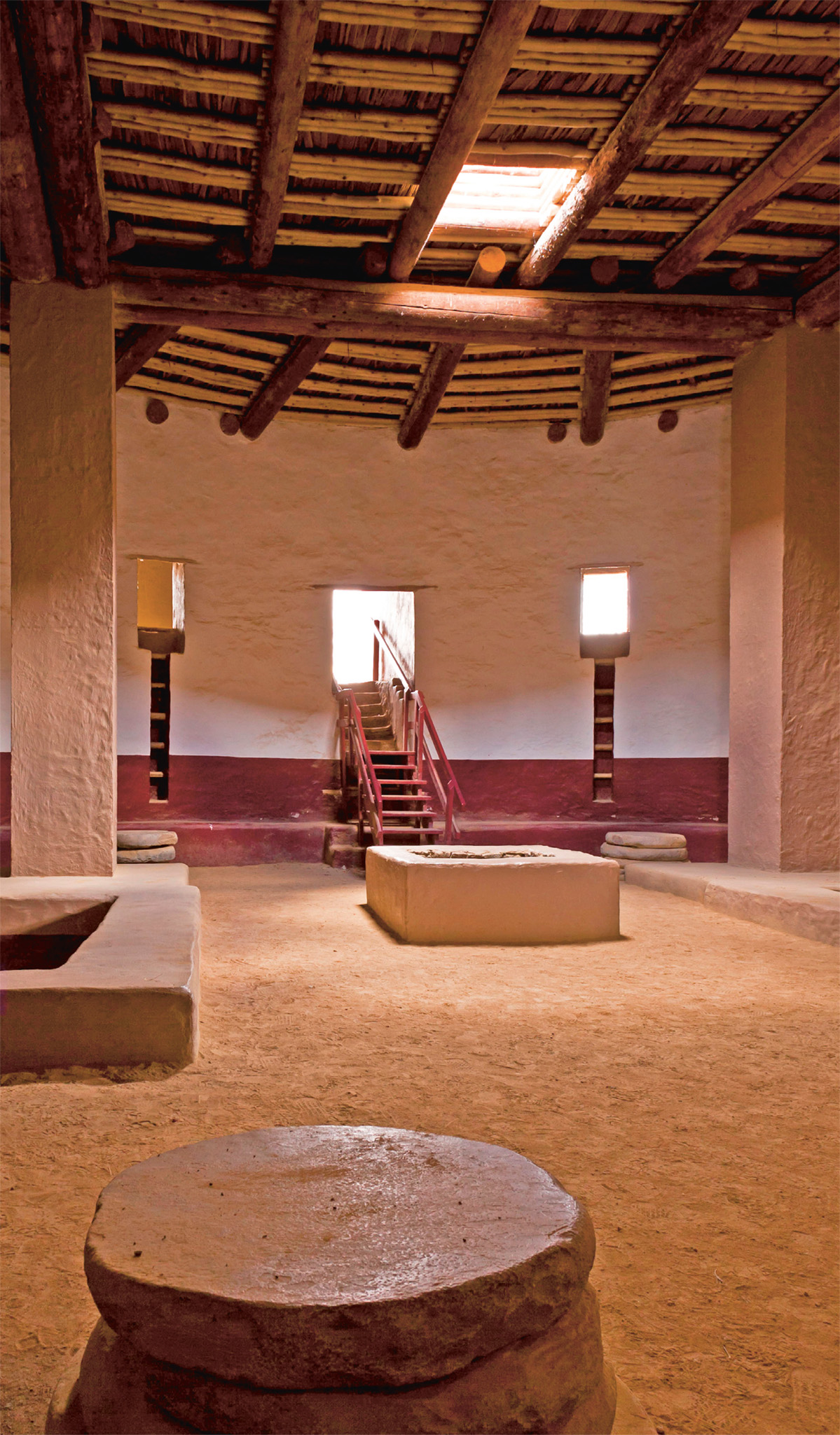
t Reconstructed interior of the Great Kiva at the Aztec Ruins National Monument
Still used by modern Pueblo Indians today, the kiva was the religious and ceremonial center of Ancestral Puebloan life. Kivas often had no windows and were accessed through a hole in the roof. Small kivas were used by a single family unit, while large ones accommodated the whole community.
Did You Know?
Kivas are round pit-like rooms dug into the ground and roofed with beams and earth.
DISCOVER The Four Corners

Ancestral Puebloan Ruins
Canyon de Chelly National Monument
See the remains of 5,000 years of Native habitation.
Chaco Culture National Historical Park
Large, well-preserved cliff dwellings have been preserved.
There are 600 cliff dwellings on this mesa.
Enter a fascinating reconstructed Great Kiva at this site.
